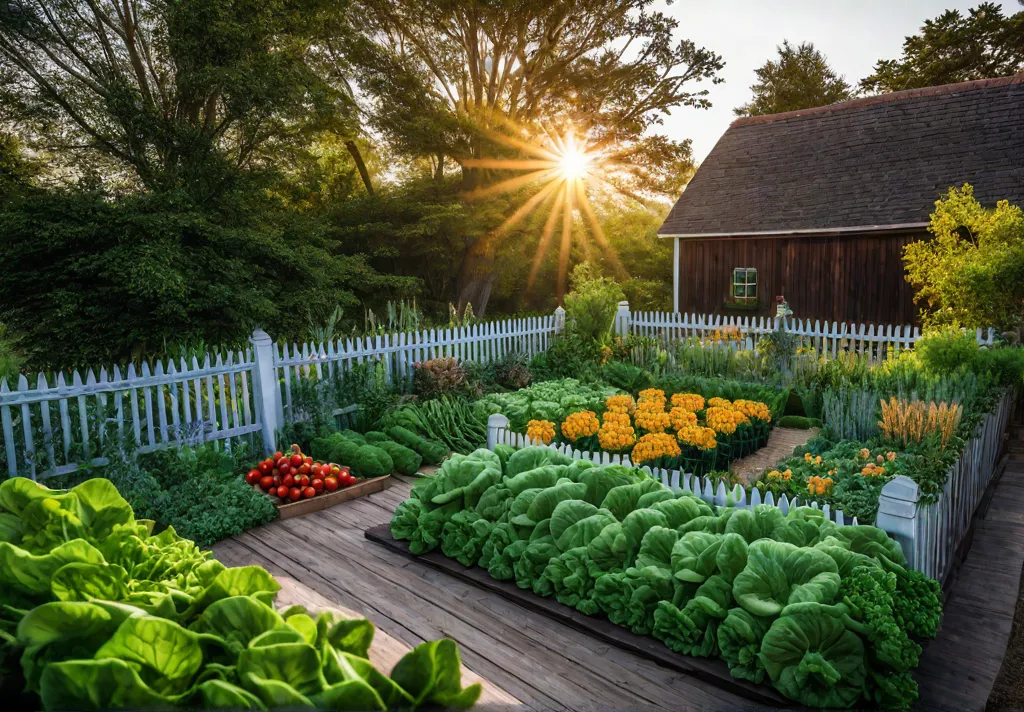Picture this: you’re lounging on the patio with a crisp glass of lemonade, sun-kissed tomatoes, and fresh herbs within arm’s reach. Sound like a scene straight out of a lifestyle magazine? Well, my friend, that idyllic vision could soon be your everyday reality with a flourishing kitchen garden right in your backyard!
As someone who once struggled to keep a cactus alive, I get it—the idea of cultivating your garden-to-table oasis can seem daunting. But trust me, with a little guidance and some dirt under your nails, you’ll soon be whipping up mouthwatering meals bursting with homegrown flavors.
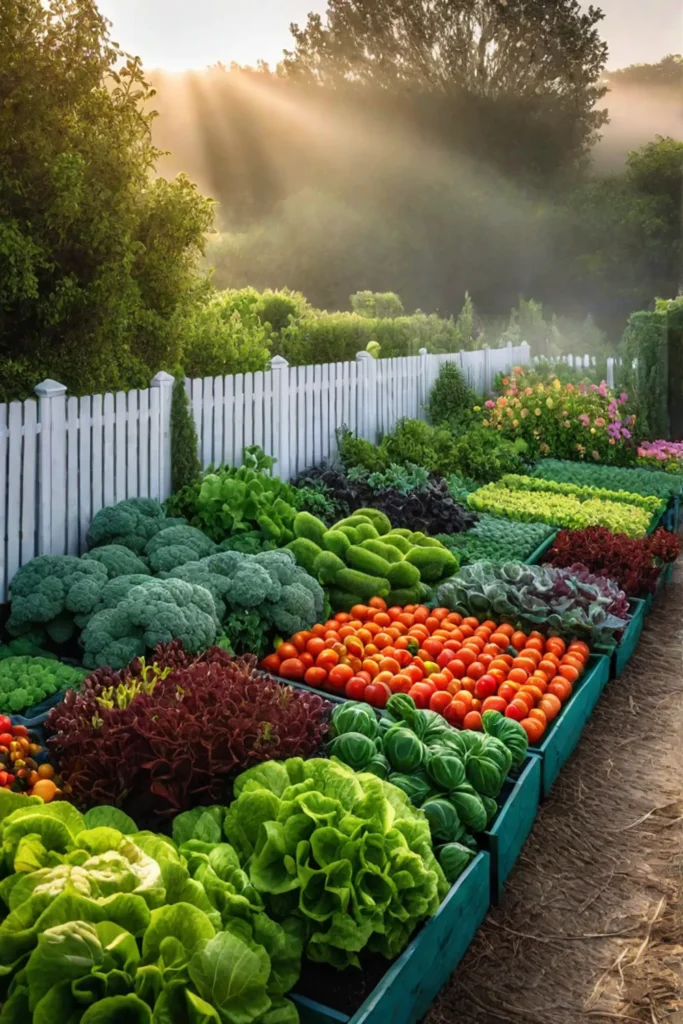
So grab your sun hat and let’s dig in, because I’m about to share all my hard-won secrets for transforming that bare patch into a bountiful edible Eden. From location scouting to seasonal planting, water conservation to harvesting like a pro, we’ll cover it all. Who’s ready to get their hands dirty?
Planning Your Sustainable Kitchen Garden
Want to transform your backyard into an edible oasis? Before you start slinging seeds, a little pre-planning can ensure your kitchen garden thrives for years to come. Trust me, as someone who’s made more than a few rookie mistakes, taking the time to map things out properly pays delicious dividends later.
Location, Location, Location: Sunlight and Water Access
Picking the perfect patch is key – you’ll want a sunny spot that gets at least six hours of direct light each day. Easy access to water is also clutch since frequent hydration keeps plants happy and your harvests bountiful. If you’re feeling handy, consider installing a drip irrigation system for effortless watering.
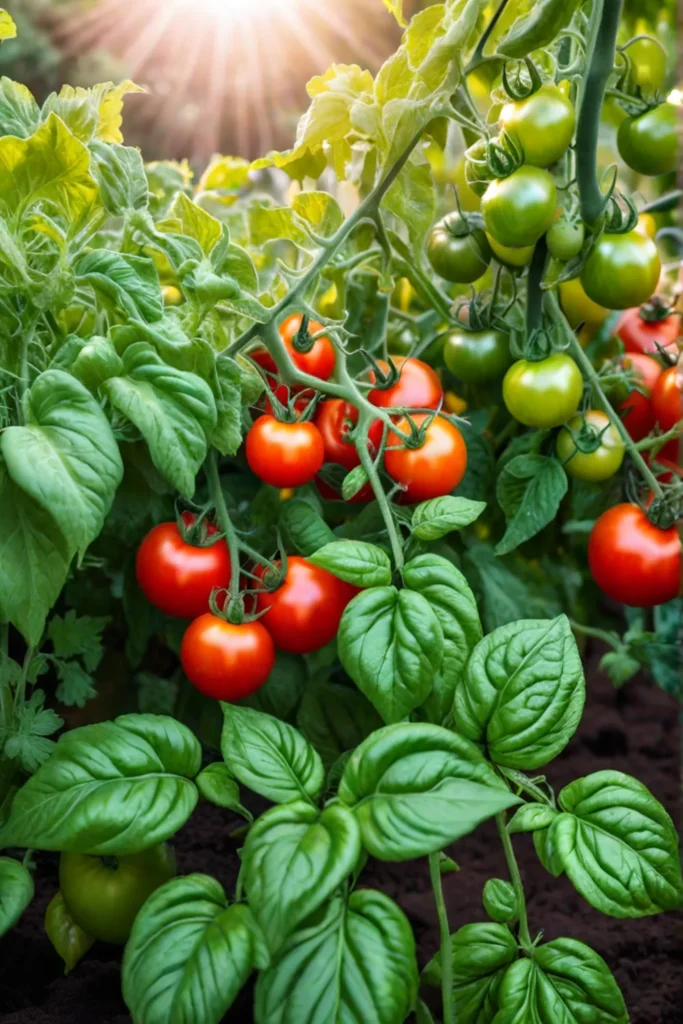
Start Small, Dream Big: Choosing the Right Garden Size
When I first caught the gardening bug, I went way overboard and ended up with more zucchini than my entire neighborhood could consume. My advice? Start with a modest 4×8 foot raised bed, then gradually expand as your green thumb skills improve. One well-tended small garden beats a larger neglected one every time.
The Foundation of Flavor: Assessing and Amending Your Soil
Think of soil as the nutrient-rich foundation for your plants’ growth. Before planting, get your dirt analyzed to check the pH and nutrient levels. Based on the results, you may need to amend it with compost, manure, or other organic matter to create that sweet, sweet loamy mix crops crave. Bonus? Soil packed with organic goodies acts like a sponge to retain moisture.
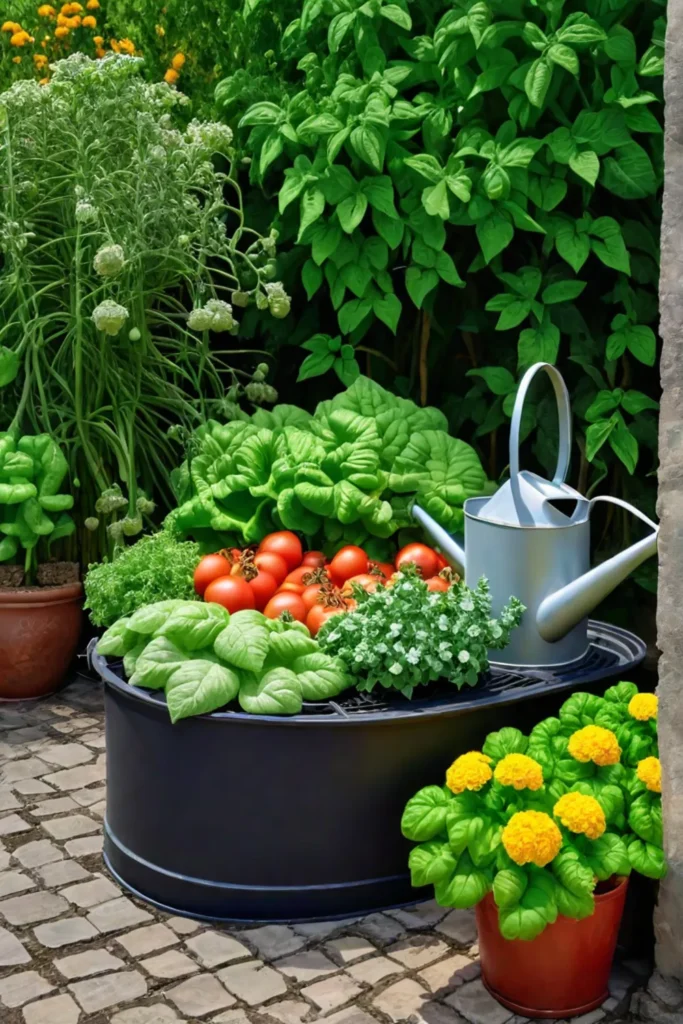
With a prime location staked out, the perfect plot size planned, and that fertile soil prepped to perfection, you’ll be well on your way to a lush kitchen garden overflowing with fresh edibles. Ready to start embracing those organic gardening practices?
Embracing Organic Gardening Practices
What if I told you that your backyard garden could be a lush oasis free from harsh chemicals and synthetic fertilizers? Embracing organic gardening practices is not only better for the environment, but it also means you’ll be harvesting the freshest, most flavorful produce imaginable.
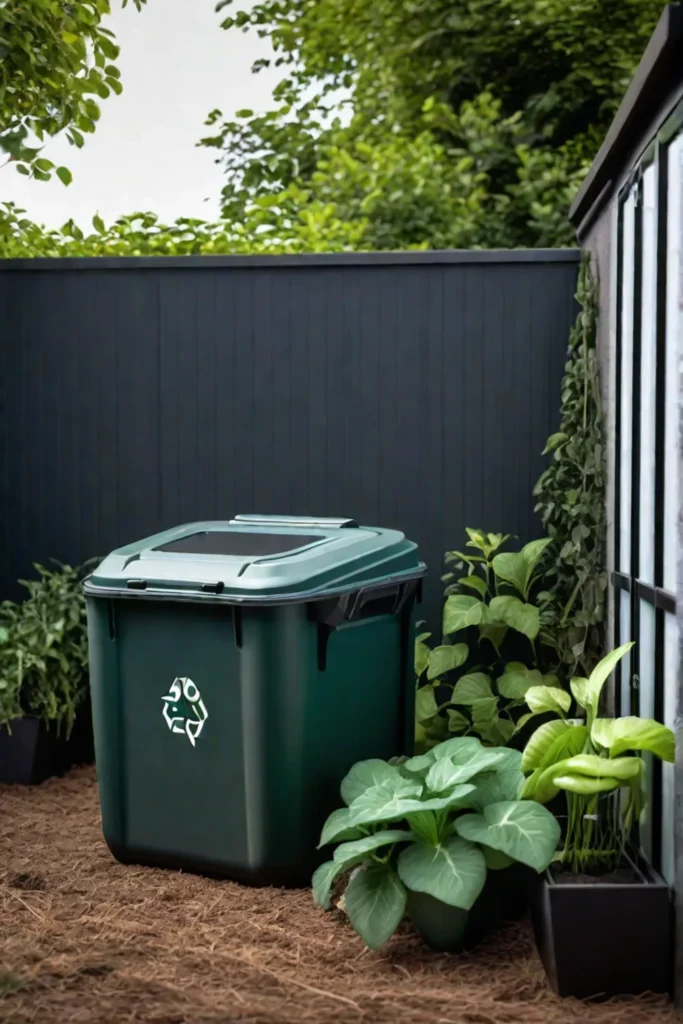
Seeding Success: Choosing Organic Seeds and Seedlings
Let’s start from the ground up, shall we? By opting for certified organic seeds and seedlings, you’re avoiding any genetically modified organisms or nasty pesticide residues right off the bat. It’s like giving your garden babies the purest start to life.
Nature’s Defenders: Natural Pest Control Methods
Now, I know what you’re thinking: “But Jesse, won’t all the good bugs eat my precious plants?” Fear not, my green-thumbed friend! There are plenty of natural ways to keep pests at bay, like planting marigolds as natural pest deterrents or using row covers as physical barriers. You can even attract some insect superheroes—I’m talking ladybugs, lacewings, and the like—to be your garden’s security team.
Black Gold of Gardening: Composting for Sustainable Growth
Finally, let’s talk about that black gold we all secretly covet: compost! By recycling your kitchen scraps and yard waste, you’ll create nutrient-rich fertilizer that gives your plants a healthy, all-natural boost. Plus, you’re doing your part to reduce those pesky greenhouse gas emissions. It’s a win-win!
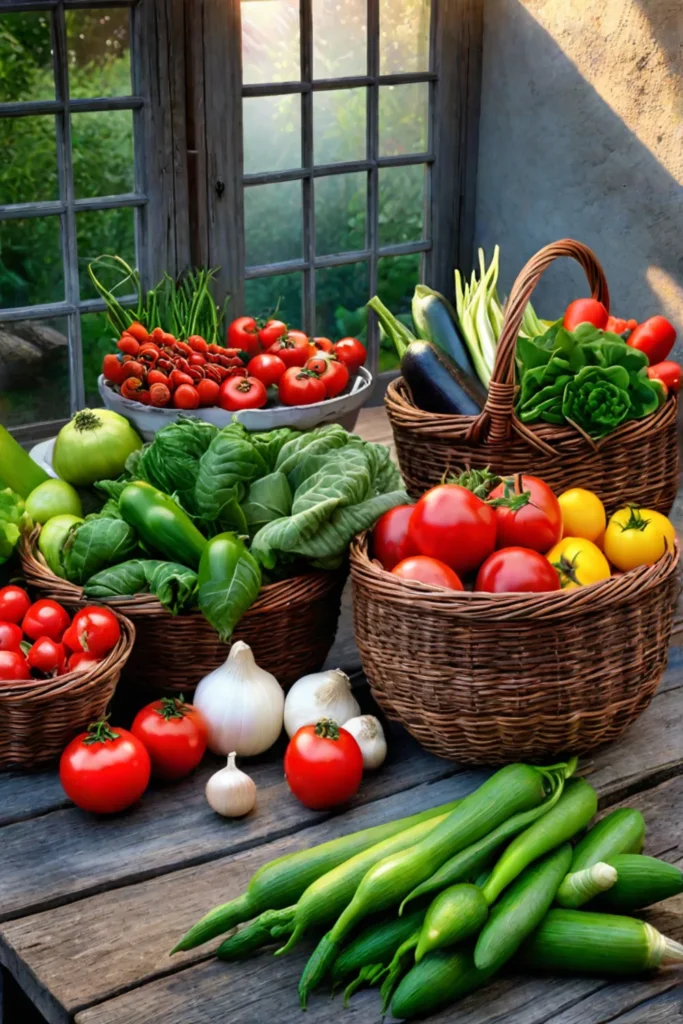
Trust me, once you see how vibrantly your organic garden flourishes, you’ll never go back to those synthetic shortcuts. Not to mention, you’ll be serving up the freshest, most mouthwatering homegrown goodies your friends and family have ever tasted. Just wait until you bite into that first organic tomato—it’ll be love at first bite! Speaking of love, let’s move on to the next section all about water conservation strategies.
Water Conservation Strategies
Did you know that a simple garden hose can pour out over 600 gallons of water in just one hour? With freshwater becoming an increasingly precious resource, it’s more crucial than ever for us green thumbs to adopt smart practices that cut down on our gardens’ thirsty habits.
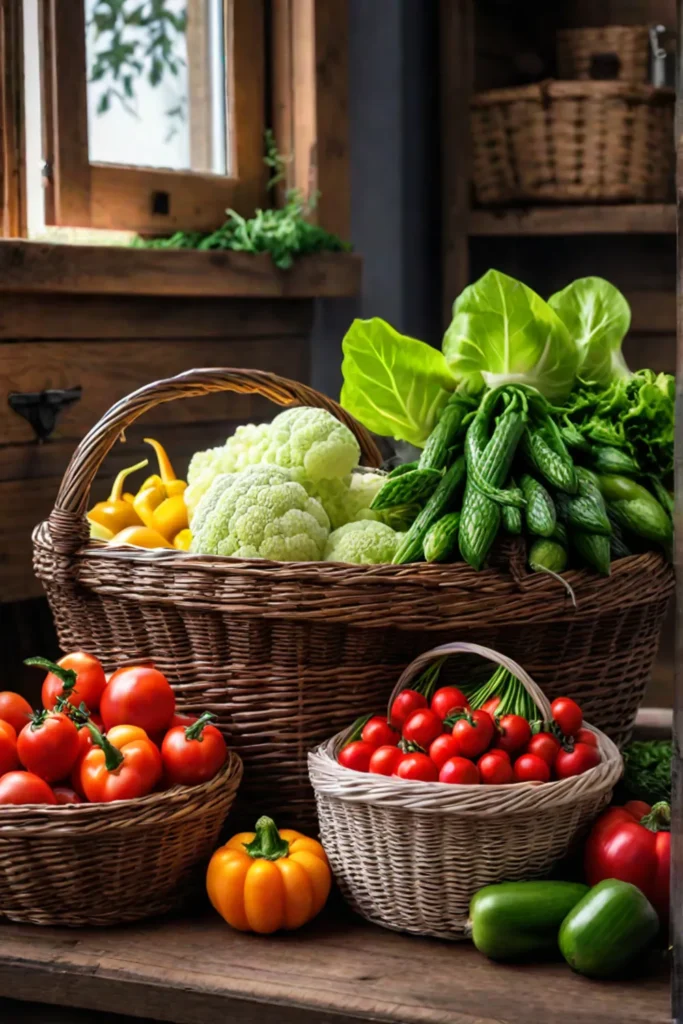
Deep Roots, Strong Plants: Efficient Watering Techniques
Instead of giving your plants a little sip every day, I’ve found that deep, infrequent waterings promote stronger root systems and hardier plants overall. Just think of those resilient wildflowers thriving on the sparse prairie rains! Give your garden a nice, thorough soaking, then let the soil dry out somewhat before watering again.
Harvesting Liquid Gold: Utilizing Rain Barrels
Why let that liquid gold from the sky go to waste? One of my favorite eco-friendly garden hacks is setting up some rain barrels to collect nature’s showering gift. A large barrel can gather hundreds of gallons throughout a wet summer—plenty to keep your plants hydrated without turning on the hose.
Mulch Magic: Retaining Moisture and Suppressing Weeds
Here’s a twofer trick that makes my life so much easier: spreading a nice thick layer of mulch around my plants. This insulating blanket does double duty, locking in precious soil moisture while simultaneously smothering those pesky weeds before they can even sprout. Opt for an organic variety like wood chips or shredded leaves.
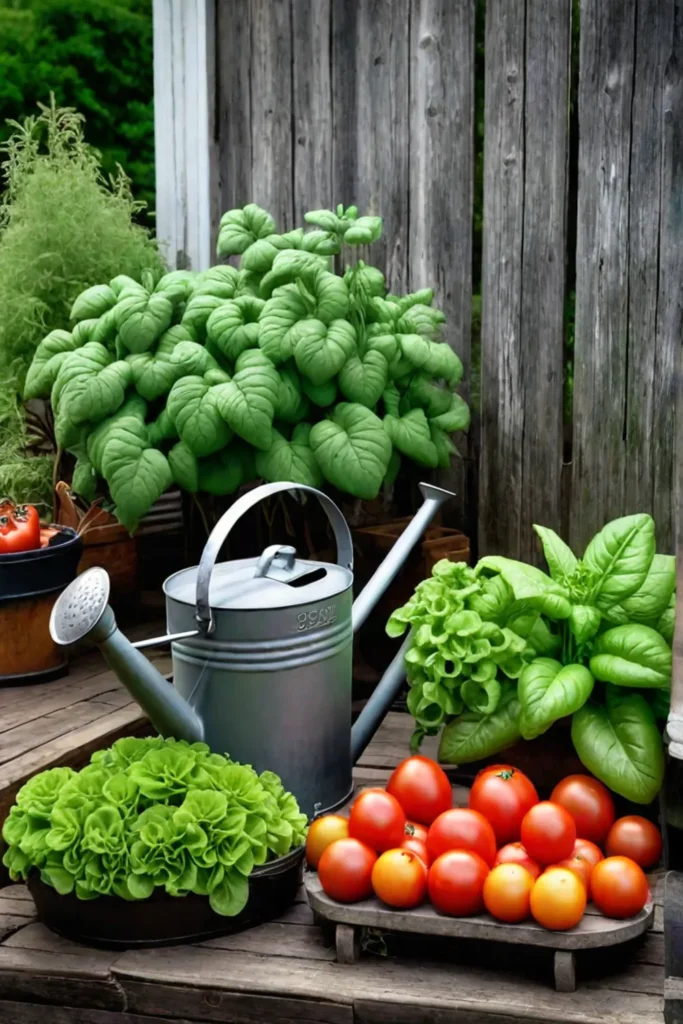
With some simple adjustments to our watering routines and set-ups, we can drastically cut down on our gardens’ water needs while keeping our plant babies happy and hydrated. Next up, let’s explore the art of seasonal planting to make the most of nature’s cycles.
The Art of Seasonal Planting
What if I told you the secret to a flourishing kitchen garden lies in embracing the natural rhythms of each season? As a budding backyard homesteader, understanding how to plant the right crops at the right time can unlock a world of abundance right in your backyard.
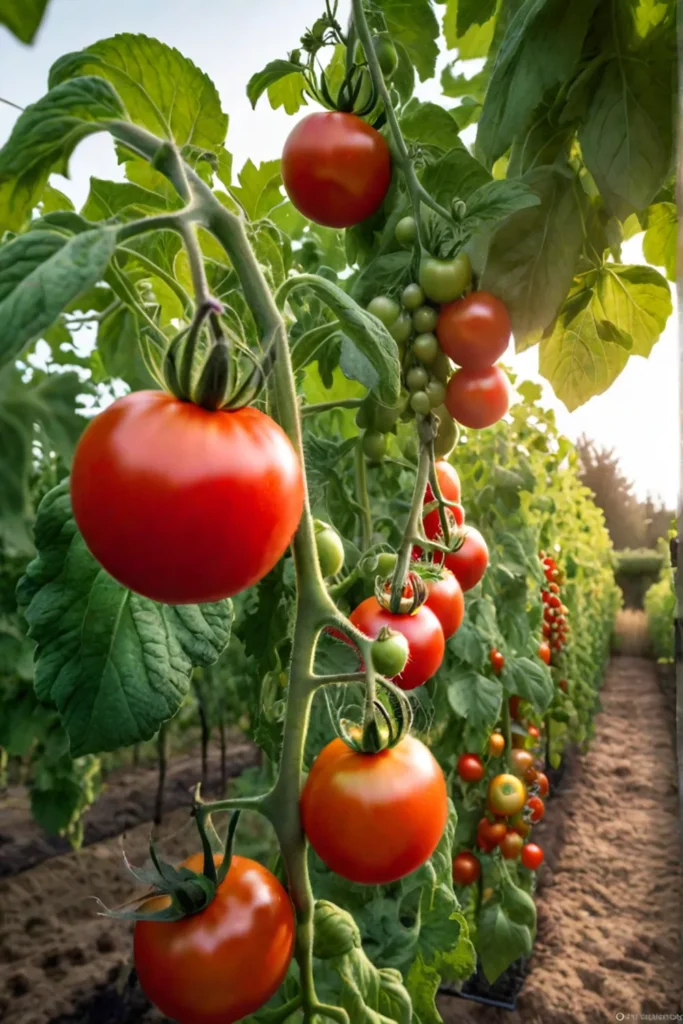
Right Plant, Right Place, Right Time: Choosing Seasonal Vegetables
Let’s start with the basics: different veggies thrive in different conditions. Cool-season superstars like crisp lettuce and spinach love the mild temperatures of spring and fall, while summer sizzlers like juicy tomatoes and peppers bask in the warmth. By syncing your planting schedule with your local climate, you’ll be rewarded with an ever-changing bounty tailored to each season’s finest.
Breaking the Cycle: The Importance of Crop Rotation
Here’s a pro tip that’ll keep your soil healthy and your harvests happy: rotate those crops! Planting the same veggies in the same spot year after year can deplete nutrients and invite pesky soilborne diseases. But by mixing it up – following tomatoes with beans, then broccoli, for instance – you’ll keep that soil fresh and fertile. Trust me, your plants will thank you.
Outsmarting Mother Nature: Season Extension Techniques
But what if I told you there’s a way to outsmart even Mother Nature herself? With a few clever tricks up your sleeve, like row covers and cold frames, you can extend that prime growing season by weeks – maybe even months! A simple cold frame can have you harvesting hardy greens well into winter, while row covers protect your plants from unexpected frosts. Who says you can’t have your (home-grown) cake and eat it too?
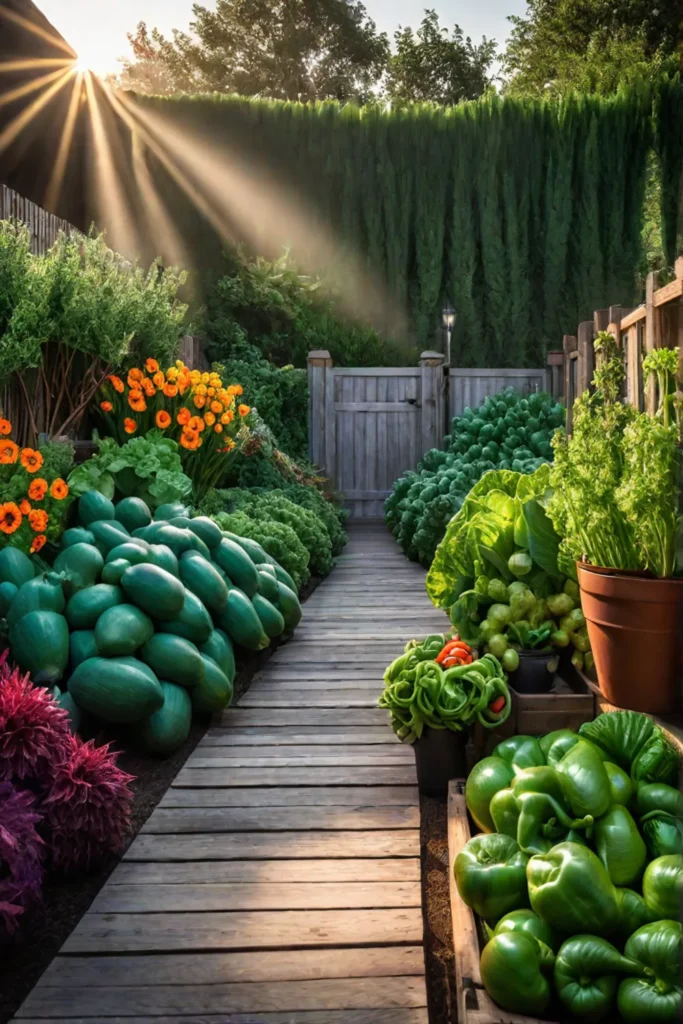
With a little seasonal savvy, that modest backyard plot can become a year-round oasis of homegrown goodness. And really, is there any greater joy than bringing the literal fruits of your labor to the table?
Speaking of bringing that bounty to the table, let’s talk about the delicious ways you can savor every last bite in the next section…
Harvesting and Enjoying the Fruits (and Vegetables!) of Your Labor
You’ve spent months nurturing your little backyard oasis, carefully tending to those seedlings as they sprouted into lush, bountiful plants. Now, it’s finally time to reap the delicious rewards of all your hard work! Doesn’t the thought of biting into a crisp, sun-ripened tomato pluck straight from your garden just make your mouth water?
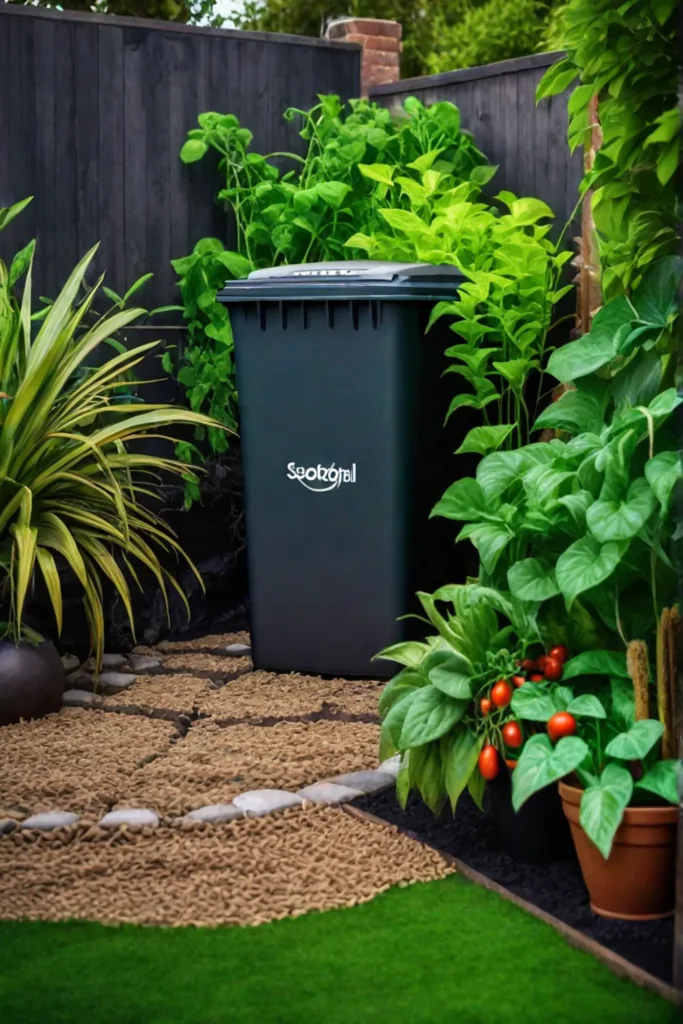
From Garden to Plate: Harvesting at Peak Ripeness
Timing is everything when it comes to harvesting your homegrown veggies. For leafy greens like lettuce and spinach, I like to pick them first thing in the morning when they’re at their crispest and most hydrated. Tomatoes are best harvested when they’ve fully colored and feel slightly soft to the touch—that way, you get to enjoy them at the pinnacle of ripeness and flavor. And for cucumbers, zucchini, and other quick-growing crops, stay on top of them and pick frequently to keep those plants pumping out more!
Culinary Creativity: Recipes for Garden Fresh Goodness
With a fridge full of your homegrown produce, you’ve got a world of delicious possibilities at your fingertips! Craft colorful salads bursting with different textures and flavors, or whip up a zesty gazpacho to sip on a sweltering day. Veggie-packed stir-fries and hearty stews are other great ways to let those fresh-from-the-garden stars shine. Don’t be afraid to get creative and experiment—your kitchen is your culinary playground!
Saving Summer’s Bounty: Food Preservation Techniques
Of course, you’ll eventually reach a point where you just can’t keep up with your garden’s prolific harvest. That’s when food preservation methods like canning, pickling, freezing, and dehydrating become total game-changers! Learn the basics of water bath canning to bottle up tangy dill pickles or sweet pepper jelly that’ll last for years. Freeze summer’s bounty by chopping up veggies for easy grab-and-go additions to soups and stews all winter long. You’ll be patting yourself on the back when you can pull out a jar of sun-ripened tomato sauce in the dead of January.
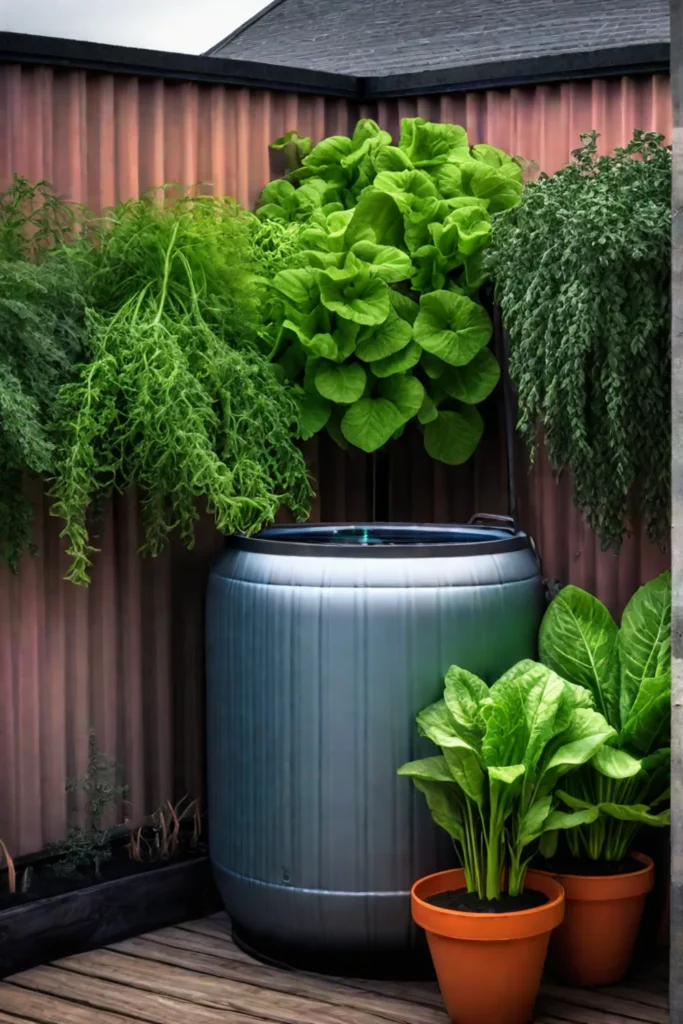
With a little creativity and some smart preservation tactics, you can keep those garden-fresh flavors gracing your table long after the growing season ends. Not to mention, there’s something deeply satisfying about cracking open a jar of homemade goodies and remembering those warm summer days spent tending your lush little oasis.
Wrapping Up
As you bite into a sun-ripened tomato still warm from the vine, that rich, sweet flavor will be your hard-earned reward—a reminder of the love and care you poured into your backyard oasis. And trust me, that first forkful of a meal made almost entirely from your homegrown harvest? It’ll taste better than anything you could buy at the store.
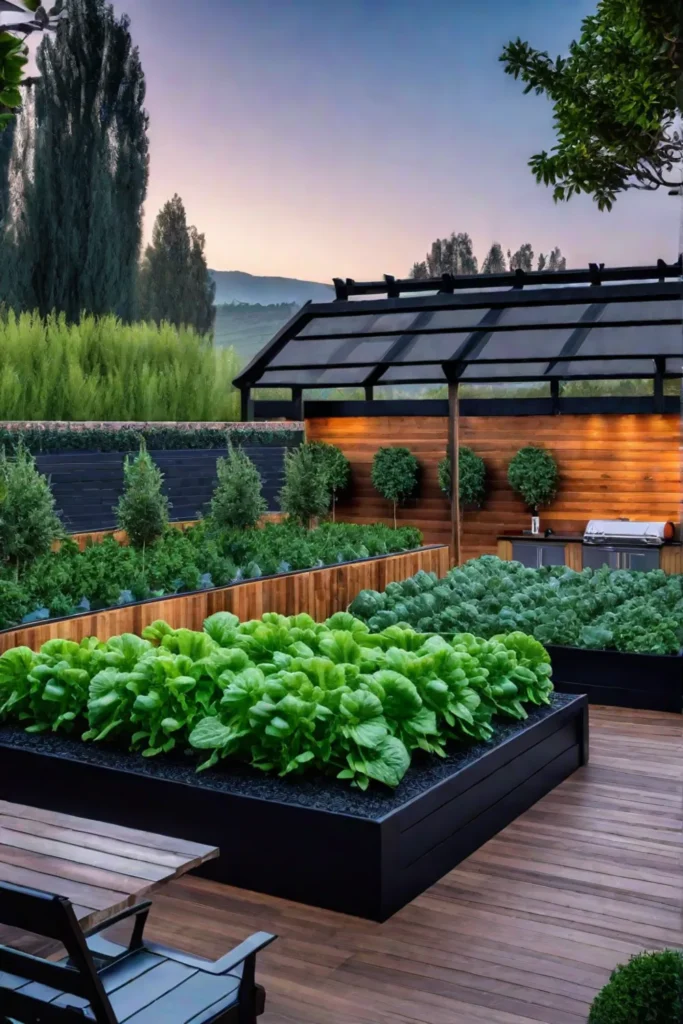
Creating an edible landscape is so much more than just planting seeds, my friend. It’s a journey of reconnecting with nature’s rhythms, slowing down to appreciate each season’s unique gifts, and savoring the simple joys of getting your hands dirty. So keep tending to your little patch with patience and care, and before you know it, you’ll be the envy of the neighborhood with a flourishing food forest of your very own.
Who’s ready to grab their gardening gloves and join me in embracing this wildly rewarding way of life? The fresher, more flavorful side is waiting!
